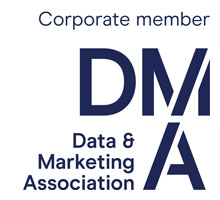Targeting for Multi-Channel Marketing
Seminar held on 23rd November 2009
Seminar Report
This half-day CGG seminar covered two main activities. One concerned multi-channel targeting in ‘traditional’ offline media – such as ‘above the line’ advertising and direct marketing – and the other in targeting digital media. The seminar chair, Barry Leventhal, pointed out that one of the aims was to bridge the offline and online worlds and consider the issues of targeting across both ‘old’ and ‘new’ media. To achieve this, the organisers had invited presentations from two speakers with roots in the ‘offline world’ and two from the ‘online world’ of a media agency.
Geodemographics can only get so personal
Andy Bell (Callcredit) explained that there’s a role for Geodemographics in multi-channel marketing, both for traditional area classifications and for individual segmentations on consumer preferences, however targeting needs to become more personalised. Personalisation can be achieved in email campaigns using conditional content based on stored customer preferences, or alternatively from registration details. Andy presented a number of case studies demonstrating how multi-channel communication can be exploited – across media such as mobile phones, email and the Web. Finally, Andy pointed out that marketing need to be applicable to the channel and that a lot of multi-channel marketing is untargeted – which can be detrimental to brand image.
Linking online behaviour to consumer segmentation
Paul Cresswell (Experian) spoke next, standing in for Rob Haslingden. Continuing in the same theme, Paul showed how geodemographic classifications and channel preference segmentations can be used to profile and understand various online behaviours. This can have valuable business applications, including targeting customers/prospects, aligning customers with the most relevant brands and planning a company’s spatial strategy. Paul went on to show how data gathered from ISP’s can be used to explore online audience behaviour and the geography of Internet usage. The results have a variety of applications including understanding ‘online’ customer profiles, planning site location strategy and competitor analysis.
Targeting across offline and online channels
Mark Patron (RedEye) summarised the key trends and drivers in multi-channel marketing, pointing out that offline and online purchasing are inexorably linked. The Holy Grail of marketing information is single source data, and Mark gave an overview of the alternative data integration techniques, recommending the combined use of market research and marketing databases to compliment each other. By comparing typical offline and online data, Mark explained the lack of progress in offline/online integration. However, Segmentation is a good way to align channels, and Mark showed some alternative approaches that could be used, concluding that RFM segmentation is a possible link between offline and online.
Death of “Last Click Wins”
Garry Lee (RedEye) focussed on the attribution of media effects in online marketing. Garry explained that the traditional approach has been to give sole credit to the website which referred a visitor immediately before purchase, ignoring other websites and touchpoints on the way. Media attribution is concerned with showing all the interactions with the brand, across all channels, enabling the influence of each channel to be examined – however the data volumes are vast. Garry presented a case study conducted by Monarch Airlines, which has enabled Monarch to understand how the online channels support each other. This work has led to Monarch streamlining their online marketing activity and making a better value measurement of email.
In a lively panel session following Garry’s presentation, Garry clarified that only the online channels are analysed in media attribution currently, however there are plans to include the use of call centres for financial services brands.
Get the latest MRS news
Our newsletters cover the latest MRS events, policy updates and research news.










